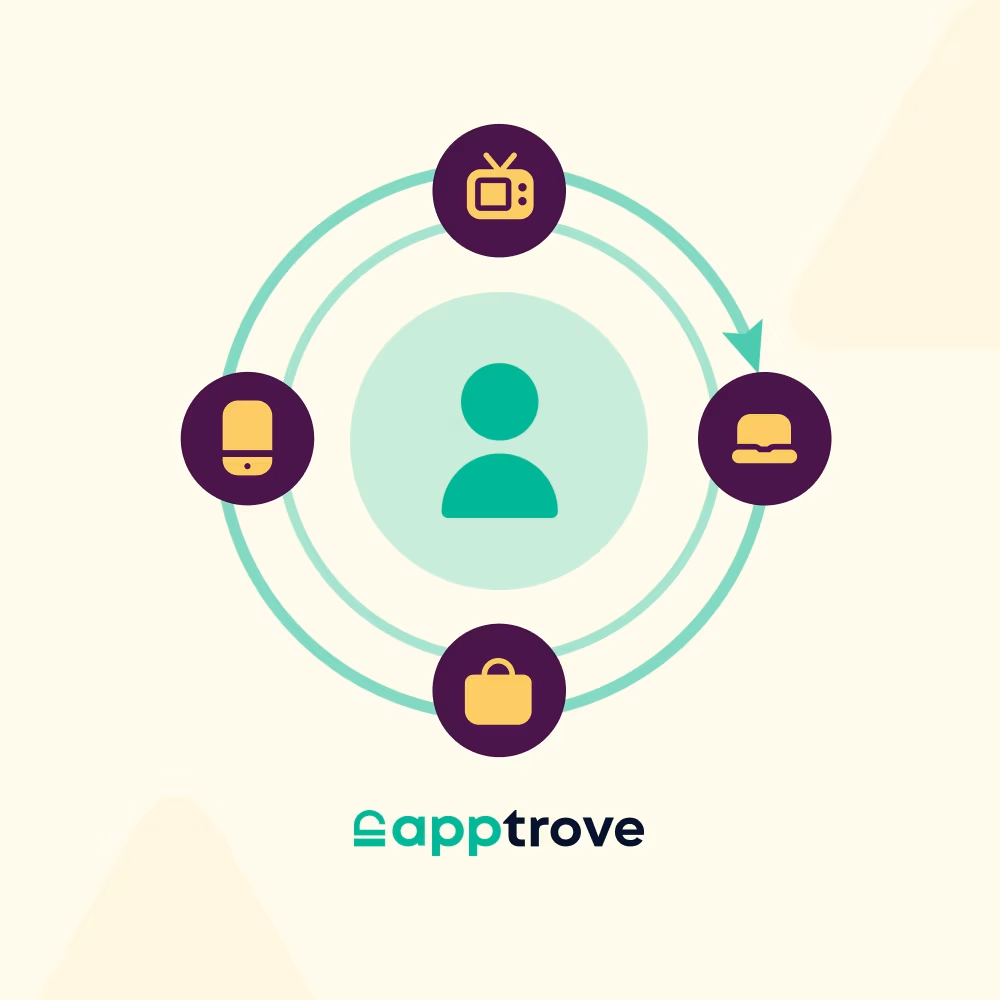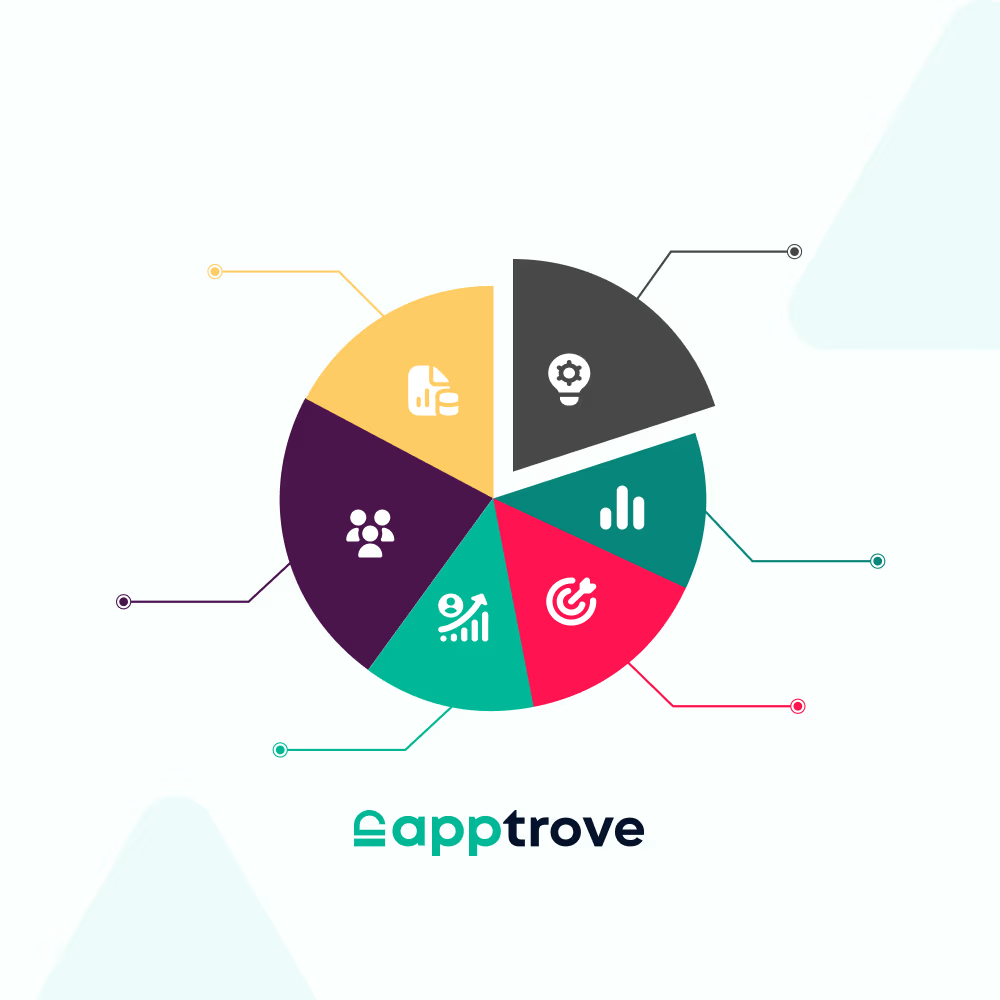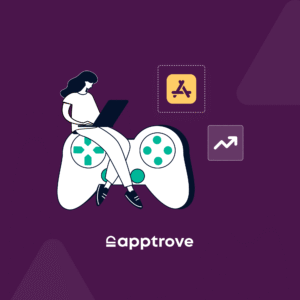Modern marketing is inundated with dashboards, metrics, and attribution models; however, very few of them tell the whole story. Channels take credit, platforms amplify their numbers, and surface reporting often looks better than reality. Growth leaders understand that metrics can’t prove impact. What really matters is differentiating the real impact of your marketing activity from noise. Studies estimate that up to 40% of digital ad spend is wasted due to poor attribution
That is where incremental analysis comes in. Rather than counting clicks, impressions, or conversions as success, incremental analysis identifies the outcomes that wouldn’t happen without the campaign. Incremental analysis is the practice of differentiating true growth from activity based on existing demand.
For brands, the difference is revelatory. Incremental analysis finds campaigns that waste spend, identifies channels that contribute to net-new customers, and pinpoints opportunities to spend portions of budgets smartly. It gives decision makers the ability to act with clarity on how to prioritize deployment of resources towards strategies that drive sustainable growth.
At Apptrove, we don’t see incremental analysis as a technical add-on or a testing extravagance. We see it as the foundation of intelligent marketing. By giving brands clarity around the real value of their campaign spend, Apptrove empowers marketers to confidently allocate budgets, step-up successful strategies, and eliminate wastage.
The Evolution of Marketing Measurement Toward Incremental Analysis
Marketing measurement has never been a constant. Each phase of digital growth has forced brands to think differently about how success is defined, tracked, and optimized. From the early days of first-click attribution to today’s privacy-first ecosystems, the tools and frameworks to measure the impact of marketing have been the nexus for the allocation of budgets and decisions made on investment. Incremental analysis is the next stage of that evolution.
Why Attribution Models Fall Short Without Incremental Analysis
For years, the ever-popular attribution models ruled the world of digital marketing. Most platforms provided insight into the customer journey and gave value to touchpoints through rules like last-click, first-click, or multi-touch. Attribution models created a sense of order for marketers within the busy chaos of multi-channel marketing, but it was still built on shaky premises. Attribution never typically accounted for external factors like seasonality, brand equity, or organic demand. Moreover, attribution generally over-credited the channels that did the most visible work for converting, while largely undermining the background demands that created the conversion in the first place.
In fact, rigorous analyses show that true incrementality often falls in the 0–25% range, meaning 75–100% of conversions credited by attribution platforms may not be genuinely incremental. This means that much of what appears to be performance is, in reality, organic or expected behavior, and not necessarily ad-driven lift.
Multi-Channel Campaign Complexity and the Case for Incremental Analysis
While new channels were introduced to the market, complexity also continued to rise. As marketers swapped annual campaign costs to spend between search, social, programmatic, and offline media, the marketer was constantly left clashing with their reporting dashboards and back-end systems. Each platform claimed its slice of credit, often exaggerating its contribution. This created duplication, inflated ROI calculations, and uncertainty at the decision-making level. As customers became more fragmented in their journeys, attribution appeared to be a less reliable compass for growth.
How Privacy Shifts Accelerate the Adoption of Incremental Analysis
The next disruption arrived with privacy regulations and platform changes. GDPR, CCPA, iOS 14.5, and Google’s forthcoming Privacy Sandbox have fundamentally changed the ways that marketers collect and consume data. Marketers had to move from deterministic, user-level tracking to probabilistic, aggregated, and privacy-preserving methods. Attribution started to lose its footing as it was seen as a hard science. Marketers were no longer able to simply rely on clickstream-level tracking as evidence proving the impact of their campaigns.
The Emergence of Incremental Analysis as the Future of Marketing Measurement
Incremental analysis emerged to solve these challenges. Rather than assigning credit across channels, it measures the true lift a campaign provides over a baseline scenario of no marketing. It provides a way to isolate what marketing adds, above and beyond what would have happened naturally. This evolution from assignment of credit to measurement of causality is a major improvement in marketing science.
Apptrove positions incremental analysis as a core competency, not an afterthought. By combining advanced testing approaches with easily interpretable reporting, Apptrove gives marketing teams clarity about real impact in privacy-friendly, data-informed ways. This allows brands to step away from outdated attribution models and fragmented channels dashboards. Instead, their growth strategies can rely on evidential displays of incremental value.
The way we measure marketing is evolving as we have seen a deeper truth with successful brands not simply adapting to new channels but adapting to the new ways of understanding how effective they have been. Incremental analysis is simply how we have matured marketing measurement, from the old days of counting interactions to today, proving impact.
What is Incremental Analysis in Marketing?
Incremental analysis is the process of determining the incremental value created by a marketing activity. Where many marketers will consider how many conversions or sales resulted from their campaign, incremental analysis helps quantify the conversions that were actually driven by the campaign and those that would have happened in any case.
At its most fundamental level, it is separating correlation from causation. Conversions can go up after a campaign is launched but if we don’t have incremental analysis to tell us the conversions that were driven by the ads versus those that were driven by some other means (like existing demand or seasonality) we can only guess which it was. Incremental analysis removes that ambiguity, it shows us the true lift from marketing.
Incrementality refers to the portion of results directly attributable to a campaign’s influence. Forrester Research shows that when brands systematically measure incrementality, they can boost overall marketing ROI by 30%. This highlights how focusing on incremental outcomes doesn’t just improve measurement clarity but directly drives more efficient growth.
For example, if 1,000 users made a purchase during a promotion and incremental analysis shows that 300 of those purchases would not have happened without the promotion, the incrementality of the campaign is 30%. The other 700 purchases represent demand that would have occurred organically, independent of marketing.
The difference between delivered performance and incremental performance can be significant. Campaigns that generate activity and seem profitable at first glance may not feed any incremental value when external influences are removed. On the other hand, some channels may show relatively low volume, but perhaps be delivering a more incremental impact disproportionate to volume. Without this clarity, marketing teams risk overspending on low-value activity and underinvesting in high-return strategies.
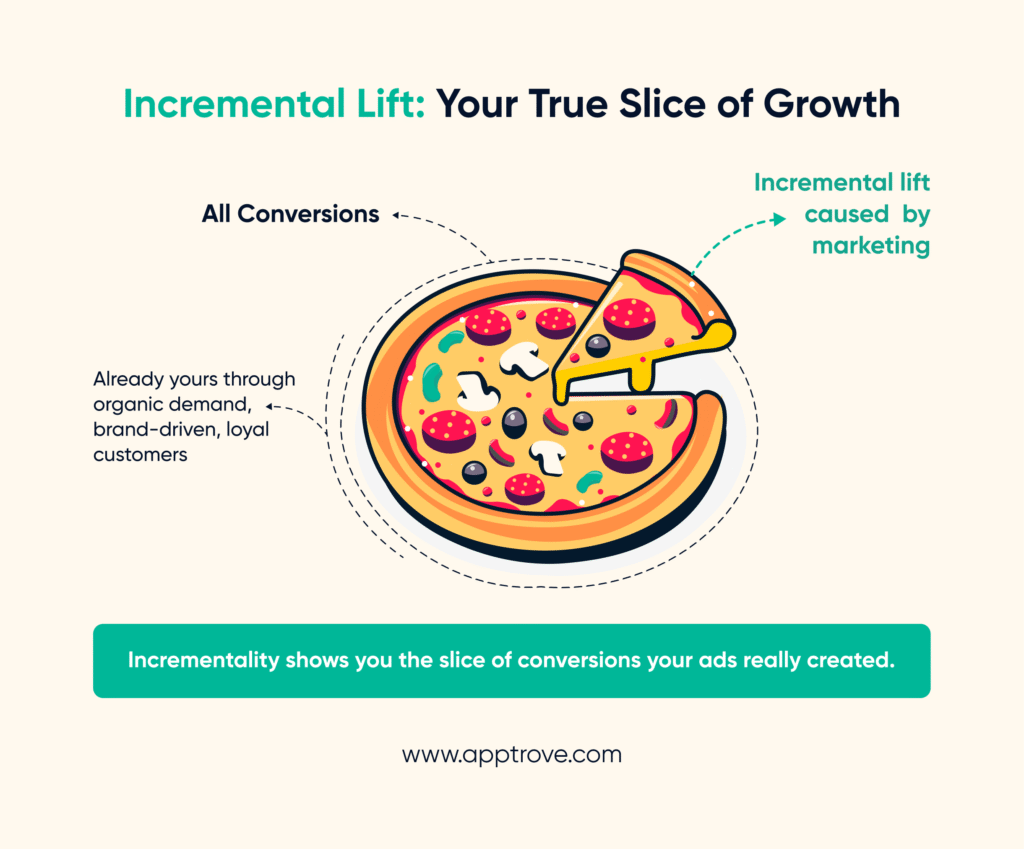
Key Principles of Incremental Analysis
Apptrove approaches incremental analysis with a focus on usability and precision. Marketers don’t need to be data scientists to realize the full benefit of incrementality. The platform turns sophisticated statistical methods into clear, effective metrics that enable growth teams to answer what difference did a campaign actually make. The key principles of incremental analysis are:
- Causality over correlation: Results are evaluated on whether they were caused by marketing, not just associated with it.
- Control groups as benchmarks: Incremental analysis requires a baseline for comparison, often through holdout groups or synthetic controls.
- Lift as the central metric: The outcome is expressed as “lift,” the measurable difference between exposed and non-exposed audiences.
- Budget efficiency: By isolating incremental outcomes, teams can calculate incremental ROI (iROAS) and determine the true efficiency of spend.
The first step is simply to understand incremental analysis. The next step, which is more complex, is understanding how to measure it. There are a variety of methods available, with their own merits and potential, each one offered as suitable based on the campaign type and purpose.
Common Methods of Conducting Incremental Analysis
Incremental analysis can be approached through several methodologies. Each method is designed to establish a reliable baseline and measure the difference marketing activity creates above that baseline. Choosing the right approach depends on campaign goals, available data, and the degree of precision required.
1. A/B Testing with Holdout Groups
The most widely recognized method is the classic A/B test. A portion of the target audience is deliberately withheld from exposure to the campaign, forming a “control group.” The remaining audience is exposed to the campaign, forming the “treatment group.” By comparing performance between the two, marketers can calculate the incremental lift caused by the campaign.
This approach is straightforward, statistically robust, and widely applicable. However, it requires sufficient audience size to ensure statistical confidence, and it can sometimes mean sacrificing potential conversions in the control group.
2. Geo-Lift Experiments
Geo-lift testing divides audiences based on geographic regions. Some regions are exposed to the campaign, while others are held back as controls. This method is particularly useful for large-scale campaigns where user-level testing is impractical. For example, a brand may activate a campaign in one set of cities while keeping a comparable set of cities dark, then measure the lift in sales between the two groups.
Geo-lift tests are cost-efficient and privacy-friendly but require careful matching of regions to avoid confounding variables like local market differences, seasonality, or external events.
3. Synthetic Control Groups
When true control groups are unavailable, synthetic controls are created using statistical modeling. By combining historical data and predictive algorithms, synthetic control groups simulate what performance would have looked like without the campaign. This allows incremental analysis to be conducted even in environments where withholding exposure is impractical or impossible.
Synthetic controls are powerful but require advanced modeling and high-quality historical data. They are especially relevant in industries where real-time experimentation is challenging, such as financial services or heavily regulated markets.
4. Causal Inference Models
Causal inference frameworks, such as difference-in-differences or regression-based methods, use advanced statistical techniques to isolate the causal effect of marketing. These models account for confounding factors and external variables, making them highly effective in complex, multi-channel environments.
While they deliver nuanced insights, causal inference models often require specialized expertise. This makes them less accessible for marketing teams without strong data science resources, unless they’re supported by platforms like Apptrove that make the methodology accessible.
5. Uplift Modeling
Uplift modeling predicts which customers are most likely to respond positively to a campaign versus those who would convert regardless. Instead of just measuring lift at the aggregate level, it identifies the incremental impact at the individual customer level. This enables hyper-targeted campaigns that prioritize audiences with the highest likelihood of being influenced by marketing.
Uplift modeling represents one of the most advanced applications of incremental analysis. However, it requires significant amounts of customer data and strong modeling infrastructure.
Apptrove supports multiple methodologies, giving marketers flexibility to choose the approach that best matches their campaigns and data environment. It ensures experiments are designed for accuracy, executed efficiently, and reported in a way that informs decision-making.
By offering this range, Apptrove makes incremental analysis accessible to both lean growth teams and enterprise-level organizations, removing the trade-off between statistical rigor and operational practicality.
How to Calculate Incremental Analysis and Lift
Incremental analysis moves beyond activity tracking by quantifying the causal effect of marketing. To operationalize this, marketers rely on a set of key metrics that transform experimental results into clear measures of impact and efficiency.
Incremental Conversions
The most basic measure is the difference between conversions in the treatment group and those in the control group. If the exposed group converts at 12% and the control group at 10%, the incremental conversion rate is 2%. This shows the additional conversions directly attributable to marketing.
Incrementality Percentage
Incrementality percentage expresses the share of total conversions that were truly incremental. Using the above example, if a campaign drove 1,000 conversions and analysis shows that 200 were incremental, the incrementality is 20%. This figure reveals how much of reported success was genuinely caused by marketing activity.
Incremental Lift
Lift represents the relative improvement marketing delivers compared to the baseline. It is calculated as:
Lift (%) = (Treatment Conversions – Control Conversions) / Control Conversions X 100
A 20% lift means the treatment group converted 20% more than the control group. This makes it easy to compare the strength of impact across different campaigns or channels.
Incremental Return on Ad Spend (iROAS)
Traditional ROAS can be misleading because it counts all conversions, whether incremental or not. iROAS adjusts for incrementality, showing the return generated only from incremental outcomes.
iROAS= Incremental Revenue/Ad Spend
This metric provides the truest measure of efficiency, answering whether each dollar spent created measurable value.
Incremental Cost per Acquisition (iCPA)
Similarly, iCPA focuses on incremental acquisitions rather than total acquisitions.
iCPA= Ad Spend/ Incremental Conversions
This reveals the real cost of driving net-new customers or actions, preventing marketers from underestimating acquisition costs by including conversions that would have happened anyway.
Interpreting Results
- Positive Lift: Campaigns are driving new value and should be considered for scaling.
- Neutral Lift: Campaigns are producing little measurable impact and should be reevaluated.
- Negative Lift: Campaigns may be cannibalizing organic demand or creating inefficiencies, signaling a need for budget reallocation.
How Incremental Analysis Shapes Marketing Strategy
Incremental analysis is only as valuable as the decisions it drives. Numbers on their own don’t create growth, action does. The real power of incrementality lies in how it reshapes strategy, budget allocation, and campaign design to maximize the return on every marketing dollar.
Optimizing Budget Allocation
Incremental results reveal which campaigns are genuinely moving the needle and which are consuming budget without adding value. Instead of distributing spend evenly or relying on platform-reported performance, brands can channel investment into the campaigns, channels, and creatives that generate the highest incremental lift. This prevents overspending on activity that looks good in reports but contributes little in reality.
Prioritizing High-Value Audiences
Uplift insights can show which audience segments are most responsive to campaigns. For example, if analysis finds that first-time app users respond strongly to paid acquisition while long-term users convert at similar rates regardless of ads, marketers can focus spend where it has the greatest impact. Incremental analysis ensures campaigns target the right audiences rather than saturating low-value segments.
Identifying Cannibalization
The most underestimated risk in marketing comes in the form of cannibalization, a situation where paid campaigns have cost conversions that will have happened organically, anyway. Incremental analysis makes this clear. If a campaign shows good performance and low or negative lift, the spend is more than probably cannibalizing organic demand, not creating incremental growth. The earlier this can be detected, the more efficient budgets can be allocated to low-quality vanity results.
Revealing Creative and Channel Insights
Incremental analysis can show you how measured influence is being dragged from which creative formats, messages or platforms. A channel that delivers less total conversions may deliver a higher percentage of incremental conversions than a bigger channel. This shifts performance focus away from volume and toward the efficiency of channel performance, creating better channel mix decisions.
Adapting to Seasonality and External Factors
Campaigns often succeed or fail due to timing as much as execution. Incremental testing makes it possible to separate the effects of seasonality, promotions, or competitive activity from the genuine impact of marketing. This allows teams to plan campaigns with precision, choosing moments when marketing is most likely to produce incremental gains.
Building Organizational Confidence
Beyond tactical optimization, incremental analysis brings credibility to marketing. Finance and leadership teams often scrutinize marketing spend, questioning its true contribution to growth. Incremental metrics such as iROAS and iCPA provide clear, evidence-based answers that tie marketing activity directly to business outcomes. This strengthens cross-functional alignment and positions marketing as a driver of profit, not just cost.
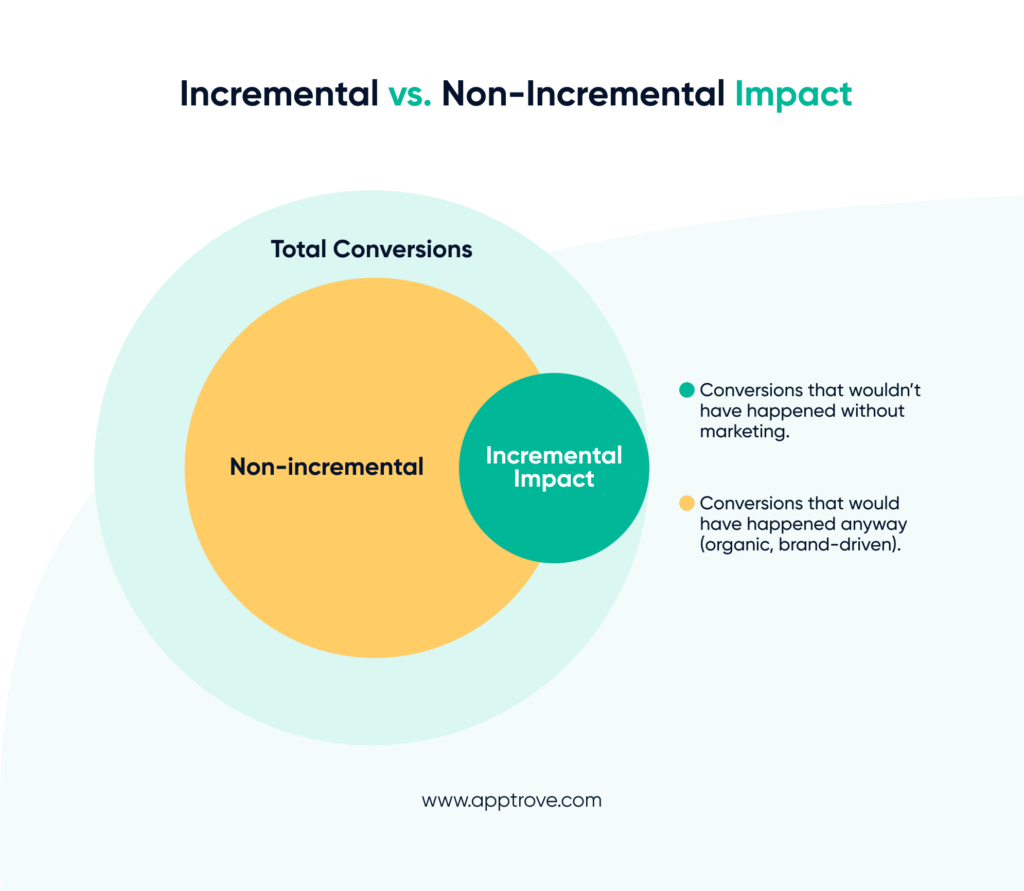
Best Practices for Running Incremental Analysis
The power of incremental analysis is really only fully realized when a consistent and disciplined approach is used. While methods are flexible, the elements of appropriate testing do not change. There are a number of best practices that ensure results are reproducible, actionable, and influential at scale.
1. Create Quality Control Groups
Incremental is first and foremost a valid point of comparison. Whether you use A/B holdouts, geo-lift regions, or synthetic controls, your control group must look like your audience, as much as possible. Badly constructed controls can bias your results, and lessen your trust in your results.
2. Sufficient Statistical Power
Incrementality tests require sufficient audience size, and enough time to create a meaningful result. Tests that are not powered, or inadequately powered, may create more misleading results like false positives, or larger lifts. Ensuring campaigns run long enough or targeting large enough groups, removes the risk of using your proper data using statistics wrongly,
3. Isolating the Impact of Each Variable
When there are a lot of campaigns hitting the same consumers at the same time, it is difficult to isolate the effect of one activity. Incremental tests provide the most value when they can be focused on one intervention and one audience or a few audiences thinking that we are aiming to look at lift. The narrower you define your intervention, the easier it is for marketers to associate the lift they see with the campaign.
4. Accounting for Seasonality and Other External Variables
Many external factors can influence the outcomes of incremental testing (holidays, competitor campaigns, macroeconomics, etc.). Incremental testing should account for these external factors, although you can do this by either testing in times of low volatility or by using methodologies that control for external variables that are a factor.
5. Value in Looking Beneath the Aggregated Results
Almost always, when looking for lift, it is measured as an aggregate across audences, location or channels. The biggest lessons we learned from some of our incremental tests were often buried beneath the aggregated results data but had wonderful lift in segments. Looking under the aggregated surface allows for the insights to be used to inform strategy for individual segments or individual channels.
6. Convert Metrics to Business Outcomes
Incrementality involve outcomes that matter to the business versus a percentage. If you use numbers like iROAS, iCPA, and incremental revenue the metrics will talk the language of finances and the C-suite. This will help to align the organization and obtain resources.
7. Build an Experimentation Culture
Most successful organizations treat incremental analysis as a process, not a one-off project. When we continuously run tests we create a feedback loop where every campaign informs the next, and in the process build a culture around evidence based decision making which reaps compounding value over time.
8. Strive for Balance Between Rigor and Pragmatism
There is a need for statistical purity but don’t allow the pursuit of perfection lead to inaction. For each experiment there is more value in running a regular, well-thought out routine experiment to get you directional information than running an immaculate experiment that is eventually abandoned due to timeliness. Incremental analysis should be a part of the rhythm of marketing, not a theoretical exercise.
9. Use Incrementality to Guide Innovation
Not only can incremental analysis inform your evaluation of current campaigns, but it can also be used as a means of exploration. Incrementality in marketing enables you to measure the impact of your tests for new channels, creatives, methodologies, and more, without fear of wastage. Equally, once every incremental test reveals its true impact, you can introduce innovation in a safe and disciplined manner.
Roadmap and Future Trends in Incremental Analysis
Incremental analysis has already reshaped the way marketers evaluate campaigns, but its importance is set to grow even further. As the digital landscape continues to evolve, new challenges and opportunities are emerging that will define the next generation of marketing measurement.
The Privacy-First Era
User-level tracking is fading. With iOS privacy changes, third-party cookie deprecation, and new regulations like GDPR and CCPA, deterministic attribution is no longer reliable. Incremental analysis, grounded in experimentation rather than individual-level data, is inherently privacy-compliant. In the years ahead, this will become a cornerstone of measurement strategies, offering clarity where traditional tracking falls short.
Advances in Synthetic Controls
Synthetic control methodologies are becoming more sophisticated. Powered by machine learning, these models can simulate control groups with greater accuracy, even when historical data is limited or external factors are volatile. This unlocks incremental analysis for campaigns that previously couldn’t be tested using traditional methods, expanding its applicability across industries.
Integration With Predictive Modeling
The next evolution of incrementality isn’t just retrospective, it’s predictive. By combining historical incremental results with predictive analytics, marketers will be able to forecast the likely lift of future campaigns before they launch. This transforms incrementality from a measurement tool into a planning and forecasting asset.
Granular, Real-Time Insights
Incremental analysis has traditionally been run in cycles, with setting up tests, waiting for results, and then acting. Advances in automation and data pipelines are reducing this delay, enabling more real-time incrementality signals. This will allow marketers to optimize campaigns mid-flight, rather than waiting for post-campaign reporting.
Application Beyond Marketing
While rooted in advertising, incremental analysis is expanding into broader business functions. Product teams use it to evaluate the impact of feature releases. CRM teams apply it to measure the effect of retention campaigns. Even finance teams leverage incrementality to validate the ROI of large-scale initiatives. The future will see incrementality embedded across the enterprise, not just within marketing departments.

